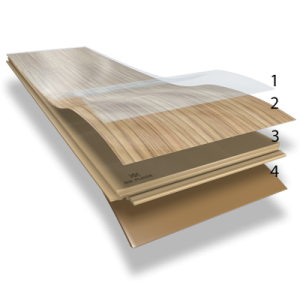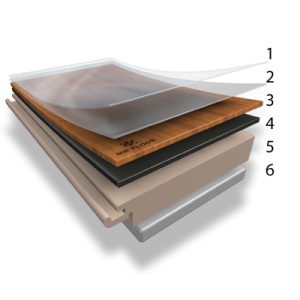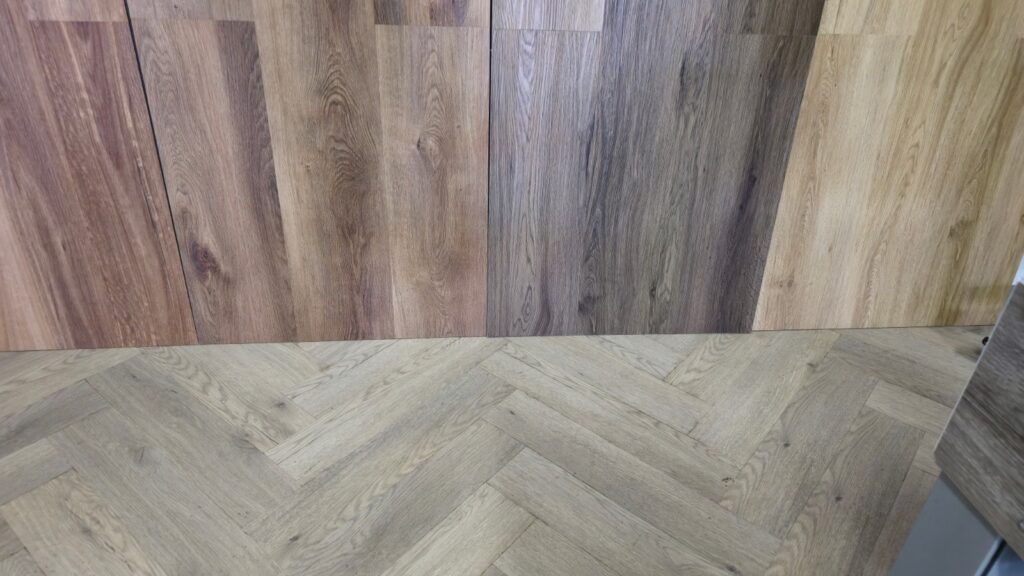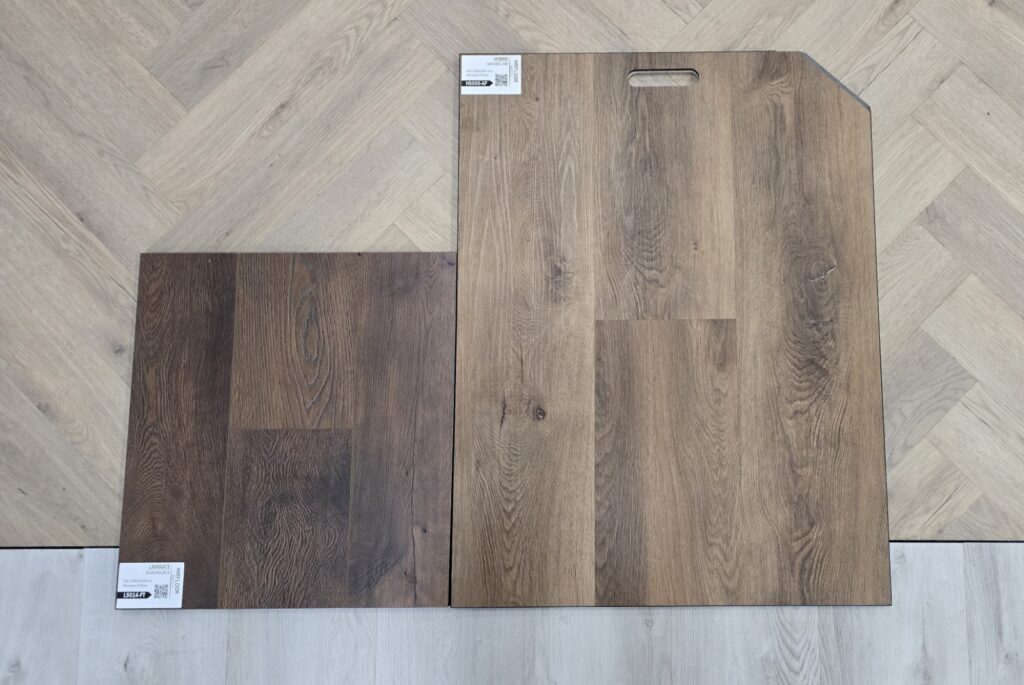Are you trying to decide between hybrid flooring and laminate for your home or office? With so many options available, it can be overwhelming to determine which one is the best fit for you. In this article, we will explore the key differences between hybrid flooring and laminate, helping you make an informed decision.
Hybrid flooring is a newer option that combines the durability of vinyl with the beauty of timber. It features a multi-layer construction, including a waterproof core that makes it resistant to water damage. Laminate flooring, on the other hand, is made up of a high-density fiberboard core with a printed image layer and a clear protective layer on top.
One of the main differences between hybrid flooring and laminate is their resistance to moisture. Hybrid flooring is highly waterproof, making it a perfect choice for areas prone to spills and humidity, such as kitchens and bathrooms. Laminate, although not waterproof, still offers some resistance to moisture but is more susceptible to damage if exposed to excessive water.
Additionally, hybrid flooring tends to have a more realistic wood look and feel compared to laminate. While laminate can simulate the appearance of wood, hybrid flooring often surpasses it in terms of authenticity.
By understanding these key differences, you can make an informed decision on whether hybrid flooring or laminate is the right choice for your space.


Composition and construction of hybrid flooring
Hybrid flooring is a relatively new and innovative flooring option that combines the best features of various materials to create a durable and versatile product. At its core, hybrid flooring consists of a multi-layer construction that includes a rigid core, a wear layer, and a backing layer.
The rigid core is typically made of a high-density polymer material, such as rigid vinyl or a composite of wood and plastic. This core provides the foundation for the flooring and offers excellent stability, preventing warping or cupping over time. The wear layer, which is the visible surface of the flooring, is designed to be highly durable and resistant to scratches, dents, and other types of wear and tear.
The backing layer, on the other hand, is responsible for providing stability and cushioning, helping to absorb sound and impact. This layer can be made of various materials, such as cork or foam, depending on the specific hybrid flooring product. The combination of these layers results in a flooring option that is both visually appealing and highly functional, making it a popular choice for both residential and commercial settings.
Composition and construction of laminate flooring
Laminate flooring is a multi-layered flooring option that is designed to mimic the appearance of natural materials, such as wood or stone, while offering a more affordable and durable alternative. The core of laminate flooring is typically made of high-density fiberboard (HDF), which provides a stable and rigid foundation for the flooring.
Atop the HDF core, there is a printed image layer that replicates the desired wood, stone, or tile pattern. This image layer is then protected by a clear wear layer, which is designed to be scratch-resistant and durable. The wear layer is typically made of a tough, transparent plastic material that helps to protect the printed image from wear and tear.
The bottom layer of laminate flooring is a backing layer, which is responsible for providing stability and cushioning. This layer can be made of various materials, such as cork or foam, depending on the specific laminate flooring product. The combination of these layers results in a flooring option that is both visually appealing and relatively affordable, making it a popular choice for many homeowners and commercial property owners.
Durability and resistance of hybrid flooring
One of the key advantages of hybrid flooring is its exceptional durability and resistance to various types of wear and tear. The rigid core of hybrid flooring is designed to be highly resistant to damage, such as scratches, dents, and impacts, making it a durable choice for high-traffic areas.
Additionally, the waterproof nature of the hybrid flooring core makes it an excellent choice for areas that are prone to moisture, such as bathrooms, kitchens, and laundry rooms. Unlike traditional wood or laminate flooring, hybrid flooring is not susceptible to water damage, warping, or swelling, making it a reliable and long-lasting option for these types of environments.
The wear layer of hybrid flooring is also highly durable, designed to withstand the rigors of daily use without showing significant signs of wear. Many hybrid flooring products are also treated with additional protective coatings, further enhancing their resistance to scratches, stains, and fading. This makes hybrid flooring a popular choice for both residential and commercial settings, where durability and longevity are essential considerations.
Durability and resistance of laminate flooring
Laminate flooring is known for its durability and resistance to wear and tear, making it a popular choice for many homeowners and commercial property owners. The core of laminate flooring, which is typically made of high-density fiberboard (HDF), provides a stable and rigid foundation that is resistant to warping, cracking, and other types of damage.
The wear layer of laminate flooring is also designed to be highly durable and scratch-resistant. This clear, protective layer helps to shield the printed image layer from damage, ensuring that the flooring maintains its attractive appearance over time. Many laminate flooring products are also treated with additional coatings or finishes that enhance their resistance to stains, fading, and other types of wear and tear.
While laminate flooring is not as waterproof as hybrid flooring, it does offer some level of resistance to moisture. The HDF core and protective wear layer help to prevent water damage, making laminate a suitable choice for areas with moderate moisture exposure, such as bathrooms and kitchens. However, it is important to note that prolonged exposure to water can still cause damage to laminate flooring, so it is essential to address any spills or leaks promptly.

Installation process of hybrid flooring
The installation process for hybrid flooring is generally straightforward and relatively easy, especially when compared to traditional hardwood or tile flooring. One of the key advantages of hybrid flooring is its floating installation method, which means that the flooring is not directly attached to the subfloor.
The installation process typically begins with the preparation of the subfloor, ensuring that it is clean, level, and free of any debris or unevenness. Once the subfloor is ready, the installer will lay down a moisture barrier, which is a thin, plastic sheet that helps to prevent any moisture from seeping into the flooring.
Next, the hybrid flooring planks are simply clicked or snapped together, creating a seamless and secure connection. This floating installation method allows the flooring to expand and contract naturally, accommodating changes in temperature and humidity without the risk of warping or buckling. The ease of installation makes hybrid flooring a popular choice for DIY projects, as well as for professional installers who can complete the process quickly and efficiently.
Installation process of laminate flooring
The installation process for laminate flooring is also relatively straightforward, although it may require a bit more preparation than hybrid flooring. Like hybrid flooring, laminate is typically installed using a floating method, where the planks are clicked or snapped together without being directly attached to the subfloor.
The first step in the installation process is to prepare the subfloor, ensuring that it is clean, level, and free of any debris or unevenness. Once the subfloor is ready, the installer will lay down a moisture barrier, which helps to prevent any moisture from seeping into the flooring and causing damage.
Next, the laminate flooring planks are carefully aligned and clicked or snapped together, creating a seamless and secure connection. The floating installation method allows the flooring to expand and contract naturally, accommodating changes in temperature and humidity without the risk of warping or buckling. While the installation process for laminate flooring is generally straightforward, it may require a bit more precision and attention to detail than hybrid flooring, as the planks need to be properly aligned and secured to ensure a seamless and durable installation.
Cost comparison between hybrid flooring and laminate
When it comes to the cost of hybrid flooring and laminate, there are a few key factors to consider. Generally speaking, hybrid flooring tends to be more expensive than laminate flooring, although the exact cost can vary depending on the specific product and brand.
The higher cost of hybrid flooring is primarily due to its more advanced and durable construction, which includes a rigid core and a highly protective wear layer. These materials and manufacturing processes result in a more expensive product, but also contribute to its superior performance and longevity.
In contrast, laminate flooring is typically more affordable, as its core is made of high-density fiberboard (HDF), which is a less expensive material than the rigid polymer or composite cores used in hybrid flooring. Additionally, the manufacturing process for laminate is generally less complex, further contributing to its lower cost.
While the initial cost of hybrid flooring may be higher, it is important to consider the long-term value and performance of the product. Hybrid flooring’s exceptional durability and resistance to wear and tear can make it a more cost-effective option in the long run, as it may require less frequent replacement or maintenance compared to laminate flooring. Ultimately, the choice between hybrid flooring and laminate will depend on your budget, the specific needs of your space, and your personal preferences.
Maintenance and care for hybrid flooring
Maintaining and caring for hybrid flooring is relatively straightforward and easy, especially when compared to traditional hardwood or tile flooring. One of the key advantages of hybrid flooring is its resistance to water and moisture, which makes it a low-maintenance option for areas like bathrooms, kitchens, and laundry rooms.
To keep hybrid flooring looking its best, it is important to regularly sweep or vacuum the surface to remove any dirt, dust, or debris. For more thorough cleaning, a damp mop or a specialized hybrid flooring cleaner can be used, taking care to avoid excessive water exposure. It is also important to avoid using harsh chemicals or abrasive cleaning products, as these can potentially damage the protective wear layer of the flooring.
In addition to regular cleaning, it is important to protect hybrid flooring from heavy furniture or appliances by using floor protectors or felt pads. This helps to prevent scratches, dents, or other types of damage. If any spills or accidents occur, it is essential to address them promptly, as hybrid flooring’s water-resistant core can help to prevent any long-term damage.
With proper care and maintenance, hybrid flooring can maintain its attractive appearance and durable performance for many years, making it a practical and low-maintenance choice for a wide range of residential and commercial settings.
Maintenance and care for laminate flooring
Maintaining and caring for laminate flooring is generally straightforward, although it does require a bit more attention compared to hybrid flooring. While laminate is designed to be durable and resistant to wear and tear, it is not as waterproof as hybrid flooring, so it is important to address any spills or moisture exposure promptly.
To keep laminate flooring looking its best, it is important to regularly sweep or vacuum the surface to remove any dirt, dust, or debris. For more thorough cleaning, a damp mop or a specialized laminate flooring cleaner can be used, taking care to avoid excessive water exposure. It is also important to avoid using harsh chemicals or abrasive cleaning products, as these can potentially damage the protective wear layer of the flooring.
In addition to regular cleaning, it is important to protect laminate flooring from heavy furniture or appliances by using floor protectors or felt pads. This helps to prevent scratches, dents, or other types of damage. If any spills or accidents occur, it is essential to address them promptly, as prolonged exposure to moisture can cause the laminate flooring to swell, warp, or degrade over time.
With proper care and maintenance, laminate flooring can maintain its attractive appearance and durable performance for many years, making it a practical and low-maintenance choice for a wide range of residential and commercial settings. However, it is important to be mindful of the flooring’s limitations when it comes to moisture exposure, and to address any issues quickly to prevent long-term damage.


